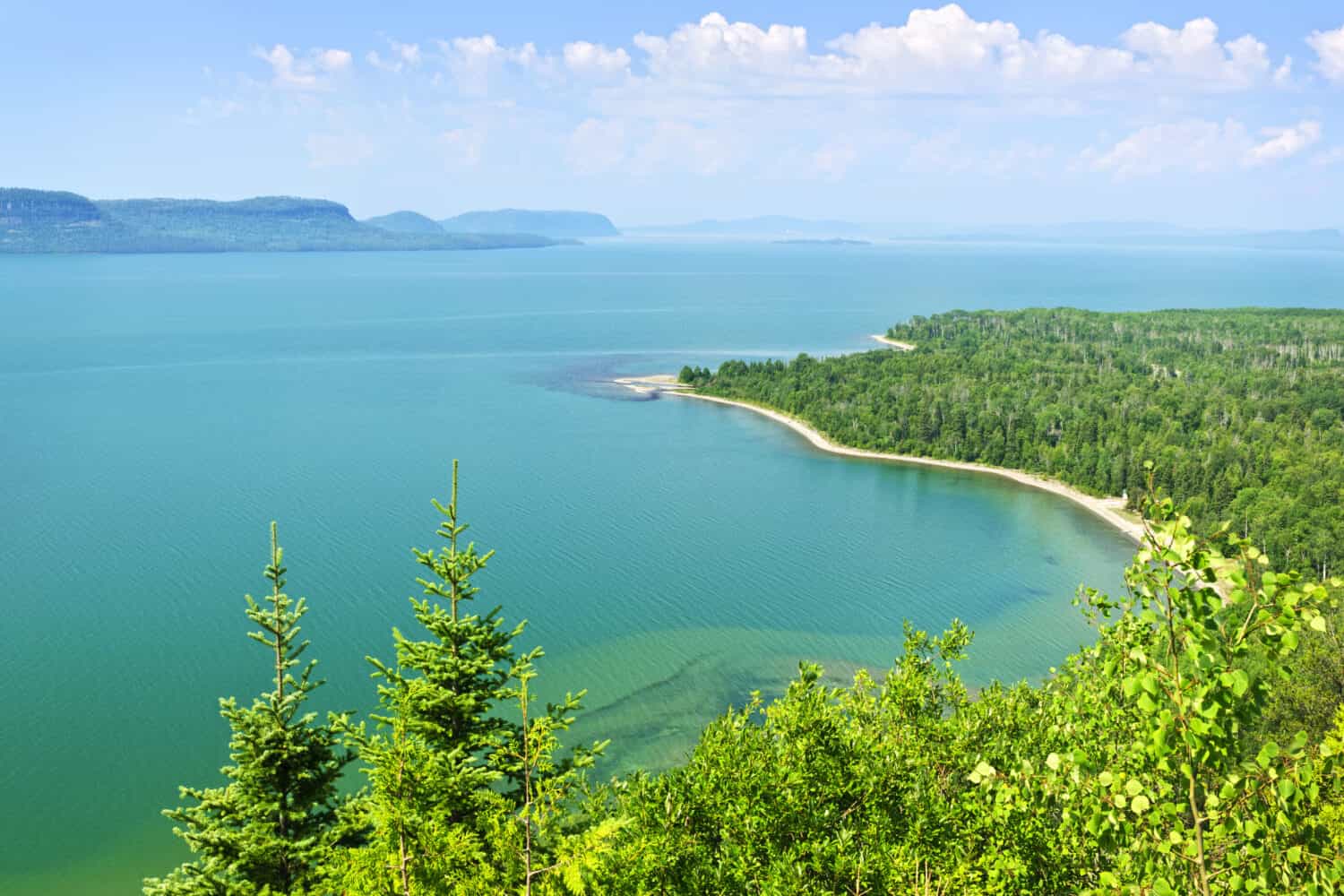Canada is home to some of the most breathtaking panoramas worldwide, with its lush forests and pristine lakes. With over 800,000 lakes, these are preferred spots to visit and enjoy water-based activities for locals and tourists. But the calm and tranquil waters hide unseen and sometimes deadly dangers. During the 1991-2010 period, 7,969 people died due to water-related causes in Canada.
Before you go on a trip, discover 12 of Canada’s most dangerous lakes.
1. Lake Erie
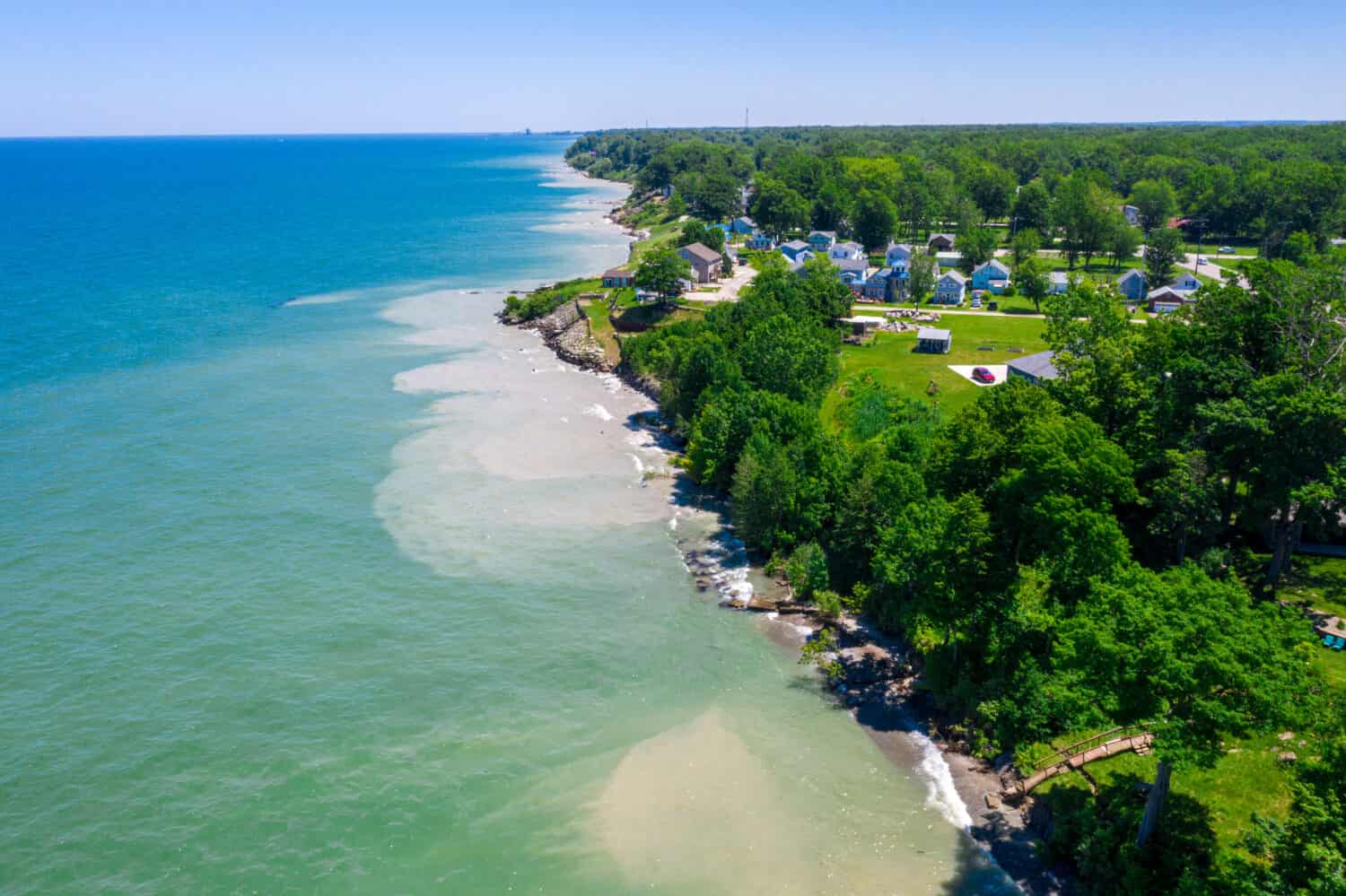
Out of the five Great Lakes, Lake Erie is the fourth largest by surface area.
©IanSkylake17/Shutterstock.com
Lake Erie has a long-lasting reputation for being one of Canada’s most dangerous bodies of water. It is located between the province of Ontario and the states of Michigan, New York, Ohio, and Pennsylvania in the southernmost part of the Great Lakes. This lake has been a marine graveyard for centuries due to capsizing waves and sudden storms.
It spans over 9,940 square miles (25,700 square kilometers), but its shallow depth — between 62 and 210 feet (19 and 64 meters) — makes it particularly perilous. Also, its depth causes the lake to freeze more often, creating hazardous navigating conditions. Specifically, in the winter, the notorious “November Gales” — sudden, violent storms — have also been the cause of many shipwrecks. The lake counts more than 2,000 shipwrecks, but only 400 have ever been found.
But Lake Erie is not only dangerous for boats. According to the Great Lakes Surf Rescue Project, 24 people drowned in 2022 and 11 in 2023.
2. Lake Superior
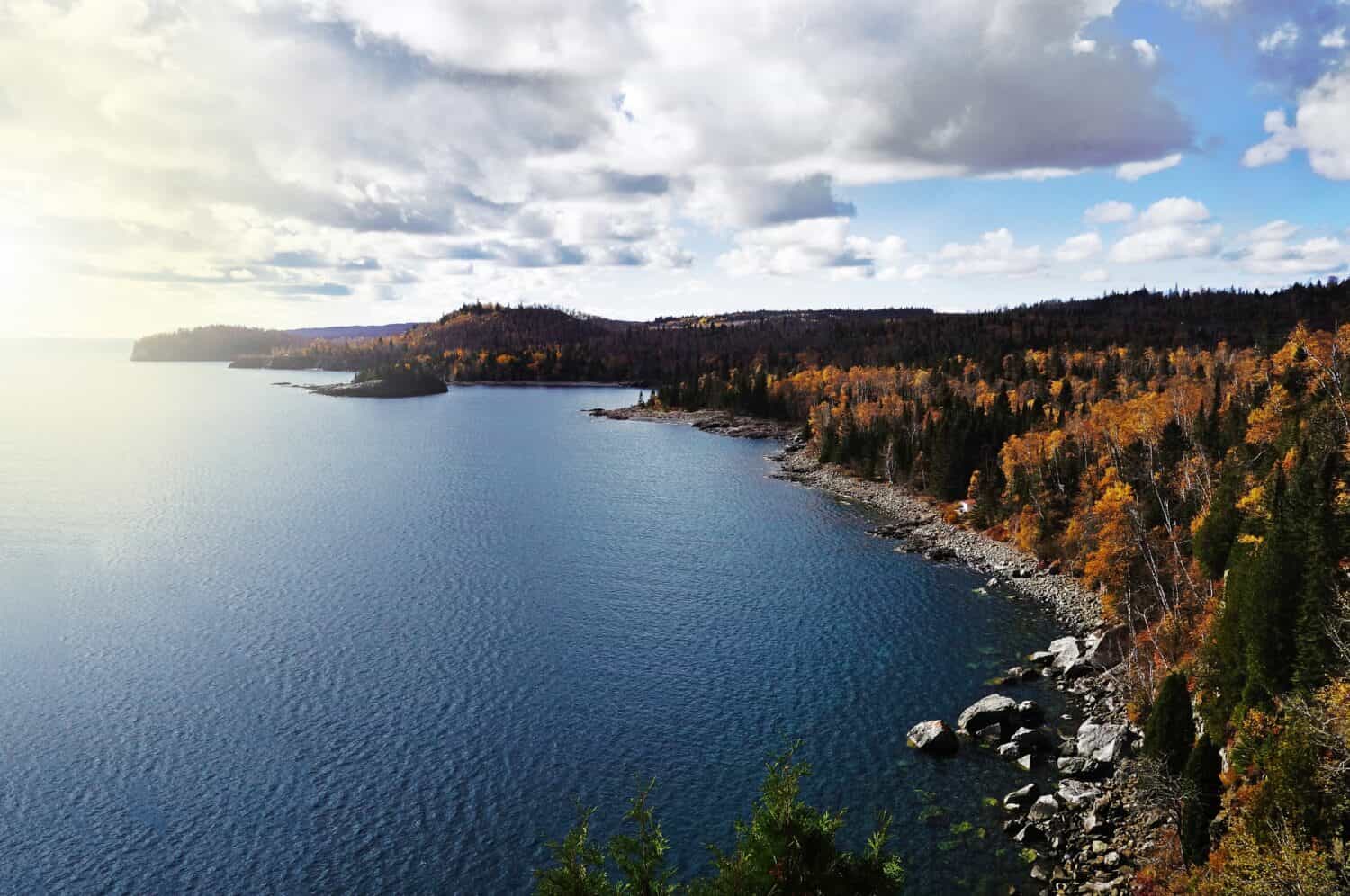
Lake Superior holds 10% of the world’s surface fresh water.
©zimmytws/Shutterstock.com
Geographically, Lake Superior is the largest of the Great Lakes, straddling the province of Ontario in the north and the states of Minnesota and Wisconsin in the south. With 31,700 square miles (82,100 square kilometers), Lake Superior is also the world’s largest freshwater lake by surface area. But it is not only large; its deepest point reaches 1,333 feet (406 meters).
Lake Superior is well-known for the shipwrecks in its waters. The lake has swallowed over 350 known vessels since the 17th century, with a death toll estimated to be more than 1,000 fatalities.
The SS Kamloops — a sinker — sank during a blizzard in 1927 with its 22 crew members. It was only rediscovered in 1977 when underwater explorers stumbled upon it. A crew member’s body, nicknamed “Grandpa,” was found remarkably preserved due to the frigid, oxygen-poor water.
Lake Superior is not only dangerous to boating enthusiasts. Every year, swimmers and anglers are victims of the lakes’ unpredictable currents, sudden temperature drops, and hazardous weather. According to the Great Lakes Surf Rescue Project, last year, six people died in Lake Superior, and six in 2023.
3. Lake Huron
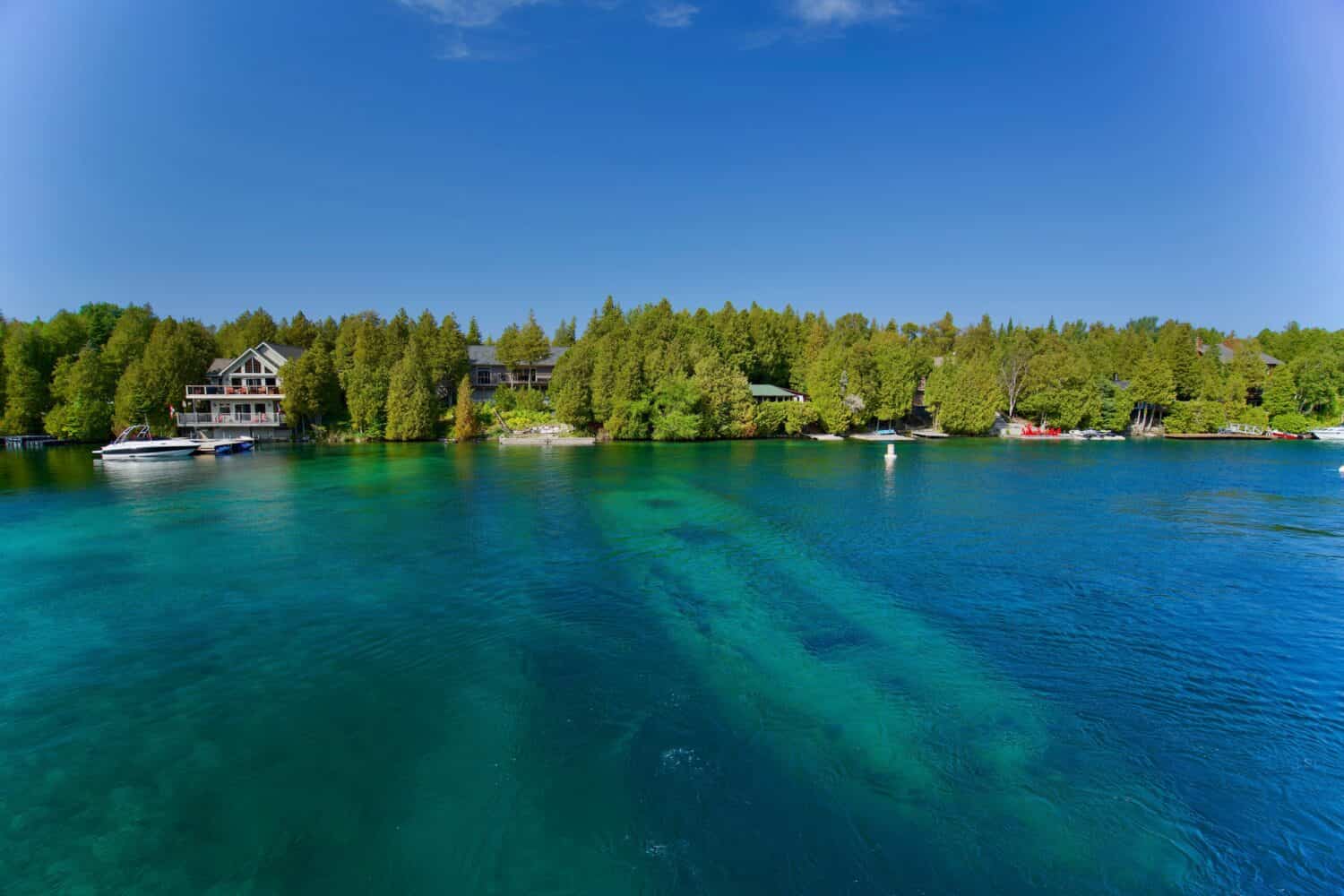
Thousands of shipwrecks lie at the bottom of Huron Lake.
©alwayssunnyalwaysreal/Shutterstock.com
Behind Lake Superior, Lake Huron is the second largest of the Great Lakes. With an area of 23,012 square miles (59,600 square kilometers), this lake has shimmering blue waters and a rugged coastline.
Lake Huron has the nickname of the “Shipwreck Capital of the Great Lakes.” Over the centuries, more than a thousand ships sank in these dangerous waters.
In 1882, the 123 passengers of the SS Asia succumbed to a fierce storm in Georgian Bay. This shipwreck is one of the deadliest in Canada. In 1966, the SS Daniel J. Morrell sank in a storm, leaving one survivor out of a 29-man crew.
Some factors behind these recurring shipwrecks are the sudden storms and fast-changing weather. The lake is also well-known for its thick fog, rendering navigation nearly impossible.
Of all the Great Lakes, it is notorious for its unpredictable and powerful currents. Those are particularly strong in areas around Point Clark and Southampton. Scuba divers, drawn to the lake to explore shipwrecks, sometimes get trapped by the currents.
In 2022, 12 people died in the lake, and one in 2023, according to the Great Lakes Surf Rescue Project’s data.
4. Lake Ontario
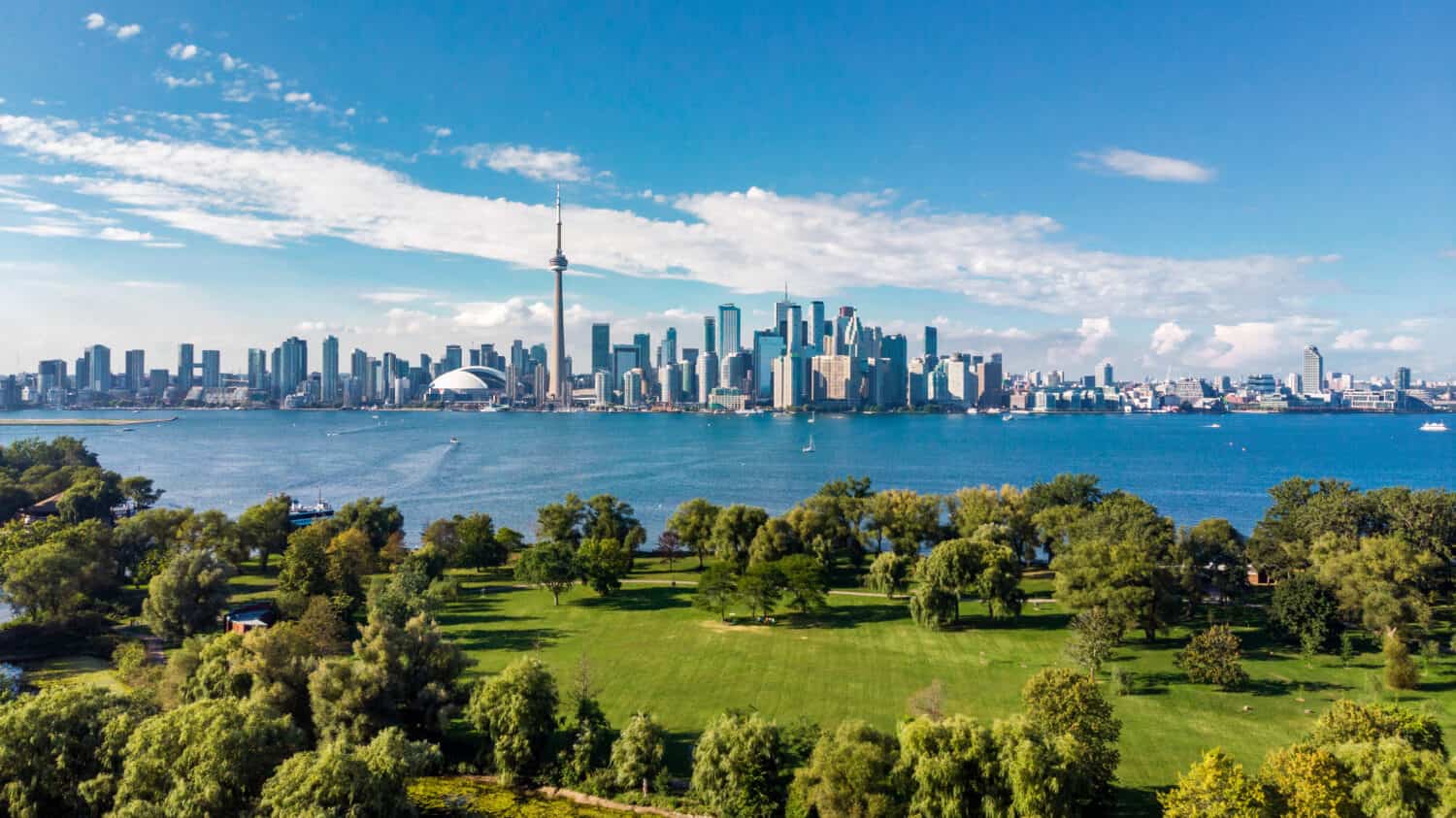
The capital of Ontario, Toronto, enjoys the stunning views offered by Lake Ontario.
©R.M. Nunes/Shutterstock.com
Lake Ontario is one of the most famous lakes in Canada. This lake is popular among residents and visitors because of its serene beauty and various water-based activities.
Nestled between the province of Ontario and the state of New York, this lake is on the easternmost side of the Great Lakes region. It features shallow, sandy shores to deep, treacherous waters that can plunge to depths of over 800 feet (244 meters).
These depths are often the sites of underwater currents, unpredictable and powerful. Sudden drop-offs and hypothermia are also risks to consider. The Great Lakes Surf Rescue Project counted 21 deaths last year and 12 in 2023 in Lake Ontario.
5. Great Slave Lake
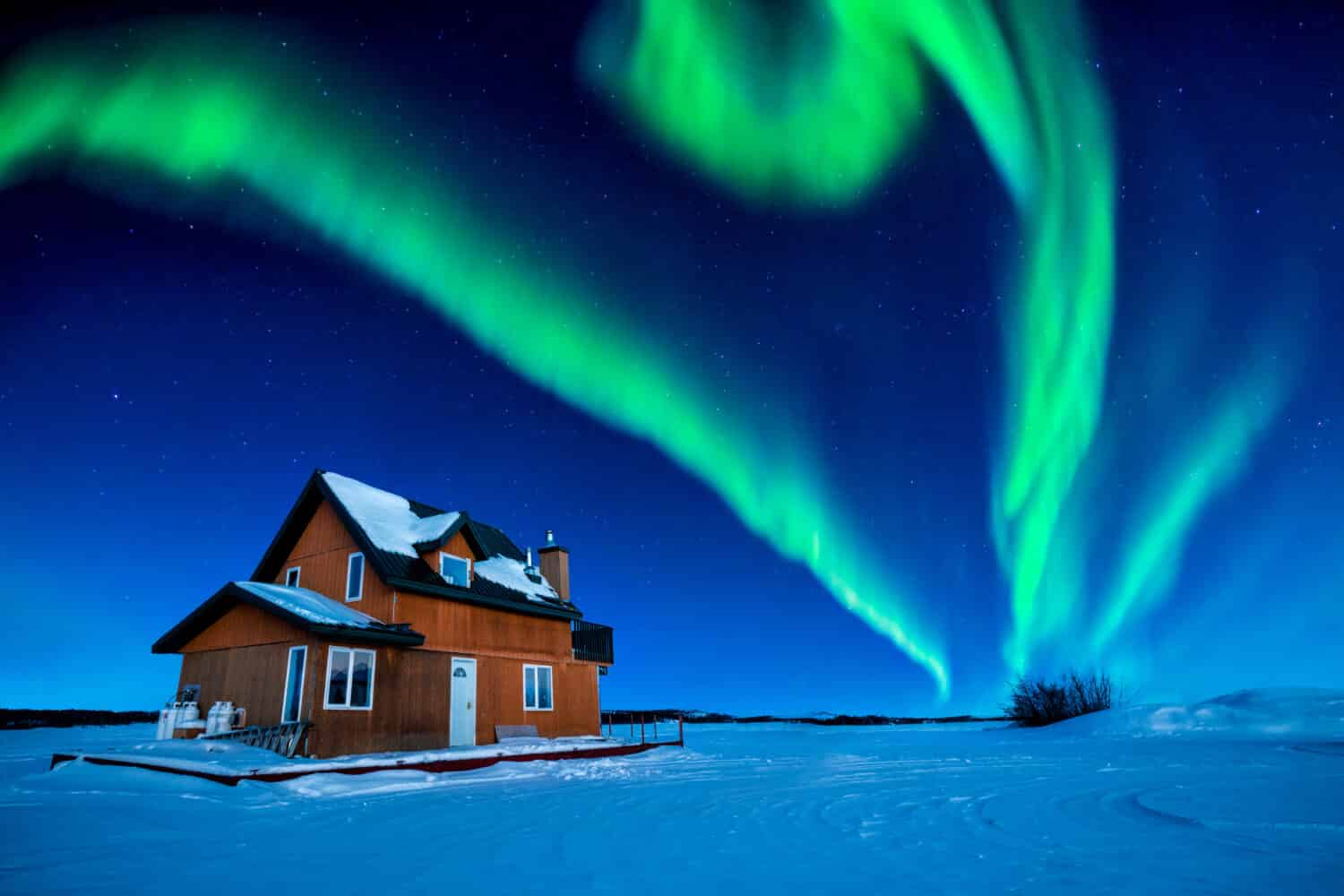
The Great Slave Lake is a popular spot to observe the aurora borealis.
©Ken Phung/Shutterstock.com
Perched in the southern part of Canada’s Northwest Territories, the Great Slave Lake is a majestic body of water. Famous for its depth and untouched wildlife, this lake is also feared for its unpredictability and potential for danger.
The Great Slave Lake reaches 2,014 feet deep (614 meters) and is the deepest lake in North America and the second-largest lake in the Northwest Territories. Lush forests and rocky cliffs also surround the lake.
Because of its staggering depth, the Great Slave Lake waters are often turbulent with powerful currents. When high winds add to the mix, deadly waves create a massive danger for sailboats.
Due to its northern location, the lake is frozen half of the year. Despite the risks, activities like ice fishing, ice skating, and snowmobiling are popular. However, unexpected ice breakage has led to many accidents with deadly hypothermia risks.
Another aggravating factor is the lake’s remote location. There is little to no cell service, and medical facilities are far from the lake. In 2021 — the latest data available — 47 people died in the Great Slave Lake, making it one of the deadliest in Canada.
6. Lake Okanagan
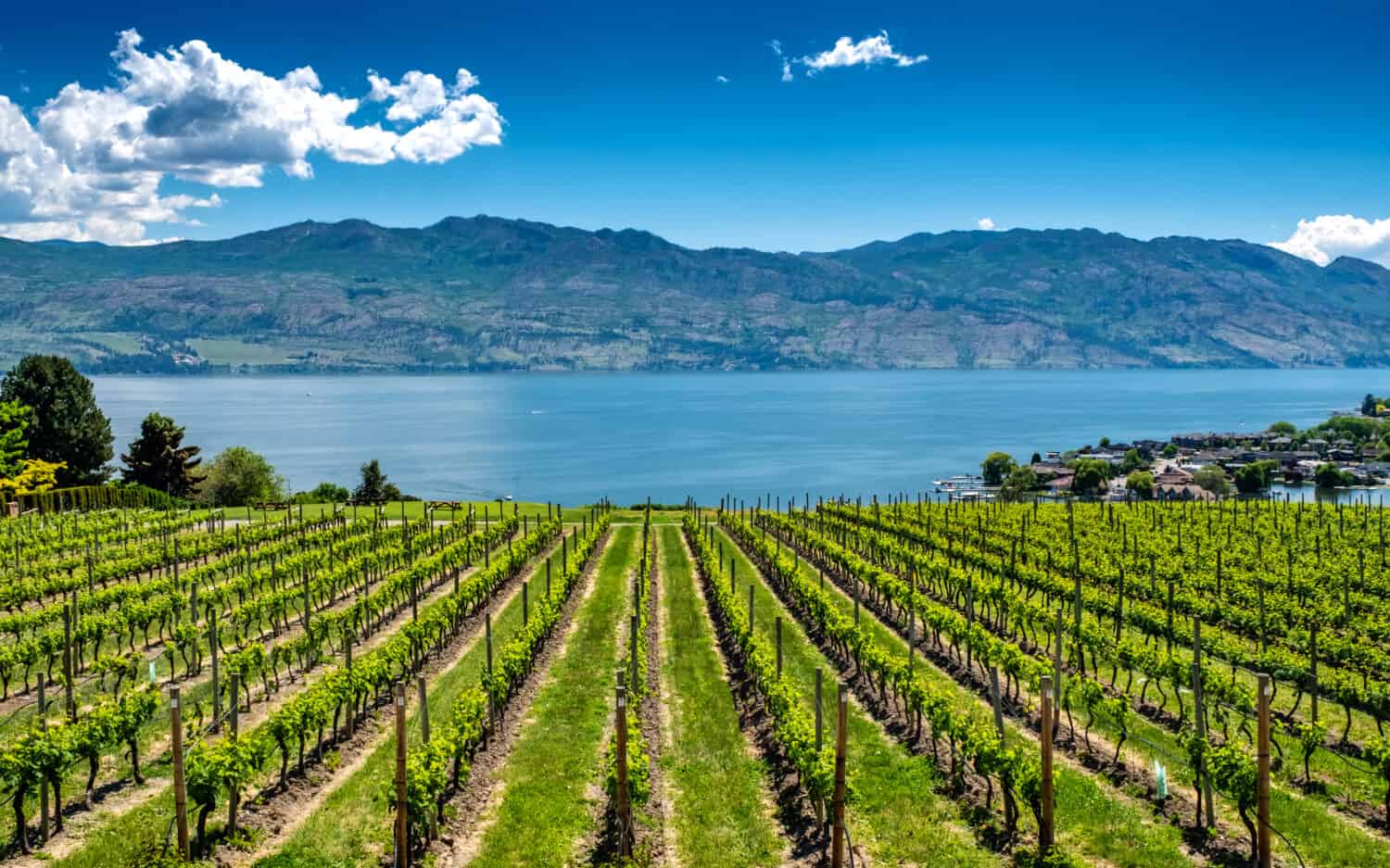
World-class vineyards surround Lake Okanagan.
©John Fader/Shutterstock.com
Located in the southern part of British Columbia, Lake Okanagan, is a stunning sight, with its sparkling turquoise waters, rolling mountains, and lush vineyards. A popular summer destination — especially for Vancouverites — with multiple water sports and scenic beaches.
For locals, Lake Okanagan harbors an ominous reputation. And it’s due to the notorious legend of Ogopogo – a mythical sea creature rumored to inhabit the lake’s depths. The Ogopogo is tied to Native tribes, the Secwepemc and Syilx. They called the creature Naitaka (translated to water demon) “an evil supernatural entity with great power and ill intent.” The Ogopogo is most commonly described as a sea serpent measuring between 40 to 50 feet in length and resembling the extinct Mosasaurus.
In native lore, Naitaka asked for a live sacrifice for the safe crossing of the lake. For hundreds of years, Native Americans would sacrifice small animals before entering the water. Legend describes that visiting chief Timbasket rejected the required sacrifice and denied the demon’s existence. Naitaka then “whipped up the lake’s surface with his long tail,” sucking the canoe under and killing the chief and his entire family. In 1855, settler John MacDougal said that his horses were forcefully sucked into the water along with his canoe. He survived by cutting the line.
With a maximum depth of almost 761 feet (305 meters) in certain areas, undercurrents quickly develop in the Okanagan waters. The lake’s unpredictable weather conditions and sudden, violent storms also pose a significant risk to boaters and swimmers.
Over the last decade, from 2012 to 2022, 30 deaths occurred in Lake Okanagan, making it the most deadly in British Columbia.
7. Lake Winnipeg
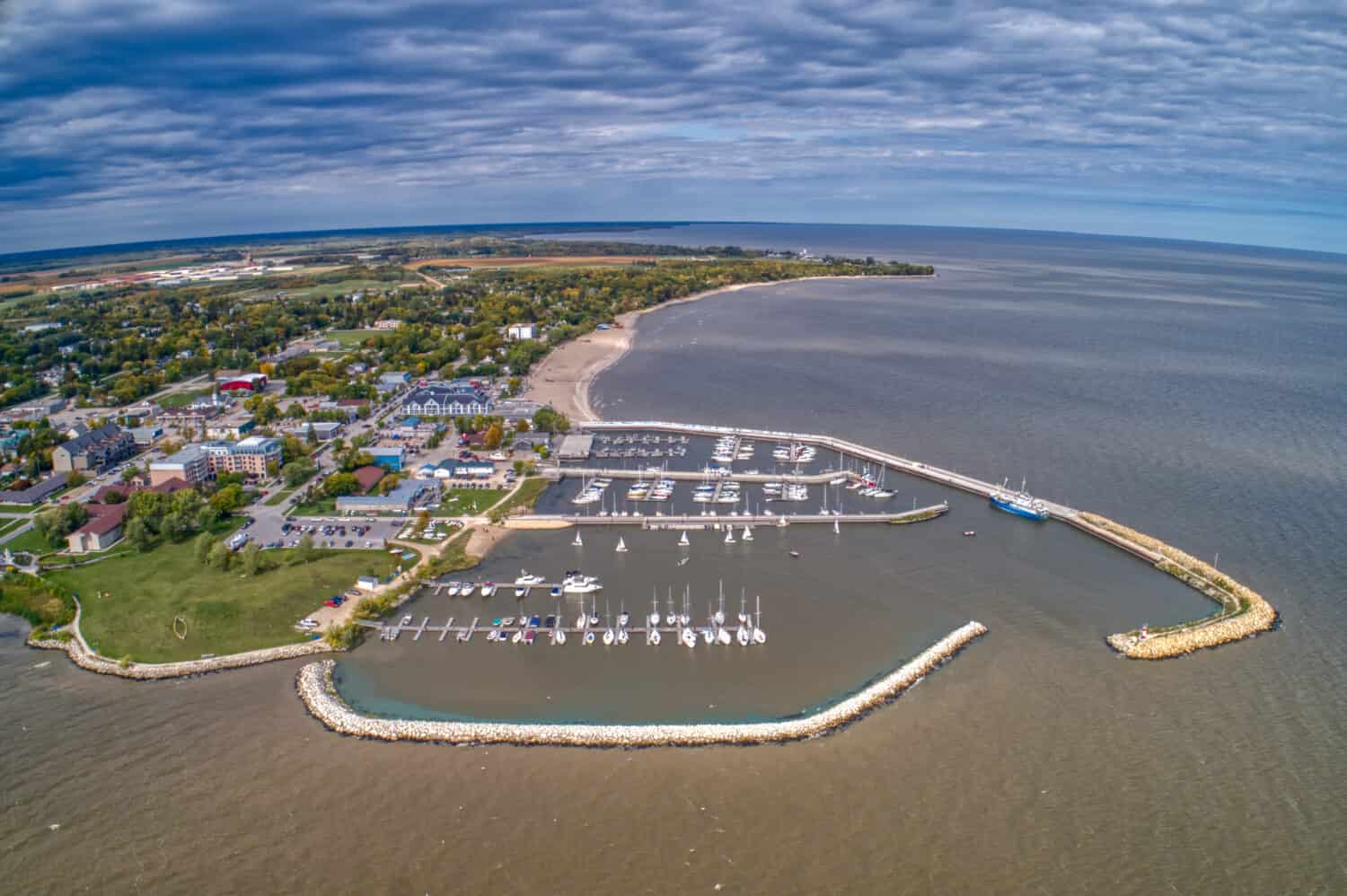
Lake Winnipeg is the remains of a massive glacial lake, Lake Agassiz.
©Jacob Boomsma/Shutterstock.com
Located in the province of Manitoba, Lake Winnipeg is the eleventh-largest freshwater lake in the world. Diverse water-based activities are available along its southern shores, which are popular tourist attractions.
Even amidst tranquil waters, strong currents exist under the surface. These undertows can overpower even the most experienced swimmers, pulling them to the bottom of the lake. Another factor is the unpredictable weather in the region. Sudden storms can whip up waves as high as six feet, instantly turning a tranquil lake into dangerous waters.
In the winter, the lake becomes icy, and the risk of hypothermia drastically increases for anyone who might fall in.
8. Lake Louise

In the summer, up to 15,000 people a day visit the shore of Lake Louise.
©Yunsun_Kim/Shutterstock.com
You have probably heard of Lake Louise, Canada’s most famous. Nestled in Banff National Park, in the heart of the Canadian Rockies, this lake offers crystal blue water with a breathtaking mountain setting.
The ever-so-tranquil waters of Lake Louise hide lethal undercurrents. But the currents are not the main danger. As a glacial lake, Lake Louise has extremely cold waters — when the lake is not frozen. The temperature ranges from 41 to 45°F (5 to 7°C) even in the height of the summer. Diving in Lake Louise may seem tempting, but these cold temperatures lead to hypothermia every year.
This stunning yet deadly lake has claimed the lives of several people over the years, more than any other lake in the park.
9. Maligne Lake

Spirit Island is a small peninsula island within Maligne Lake.
©Elena_Suvorova/Shutterstock.com
Nestled in Jasper National Park in Alberta, Maligne Lake is a turquoise gem surrounded by snow-capped peaks and dense forests.
The lake is deeper than it appears, creating strong currents and colder temperatures. Surrounded by towering mountains, Maligne Lake has its own microclimate. It can quickly switch from a sunny day to a sudden downpour or fierce winds, making it very challenging for boat navigation.
Other hazardous characteristics of Maligne Lake are the strong currents flowing beneath the surface, ready to pull under or push swimmers far from the shore, making it hard to get back to safety.
10. Moraine Lake
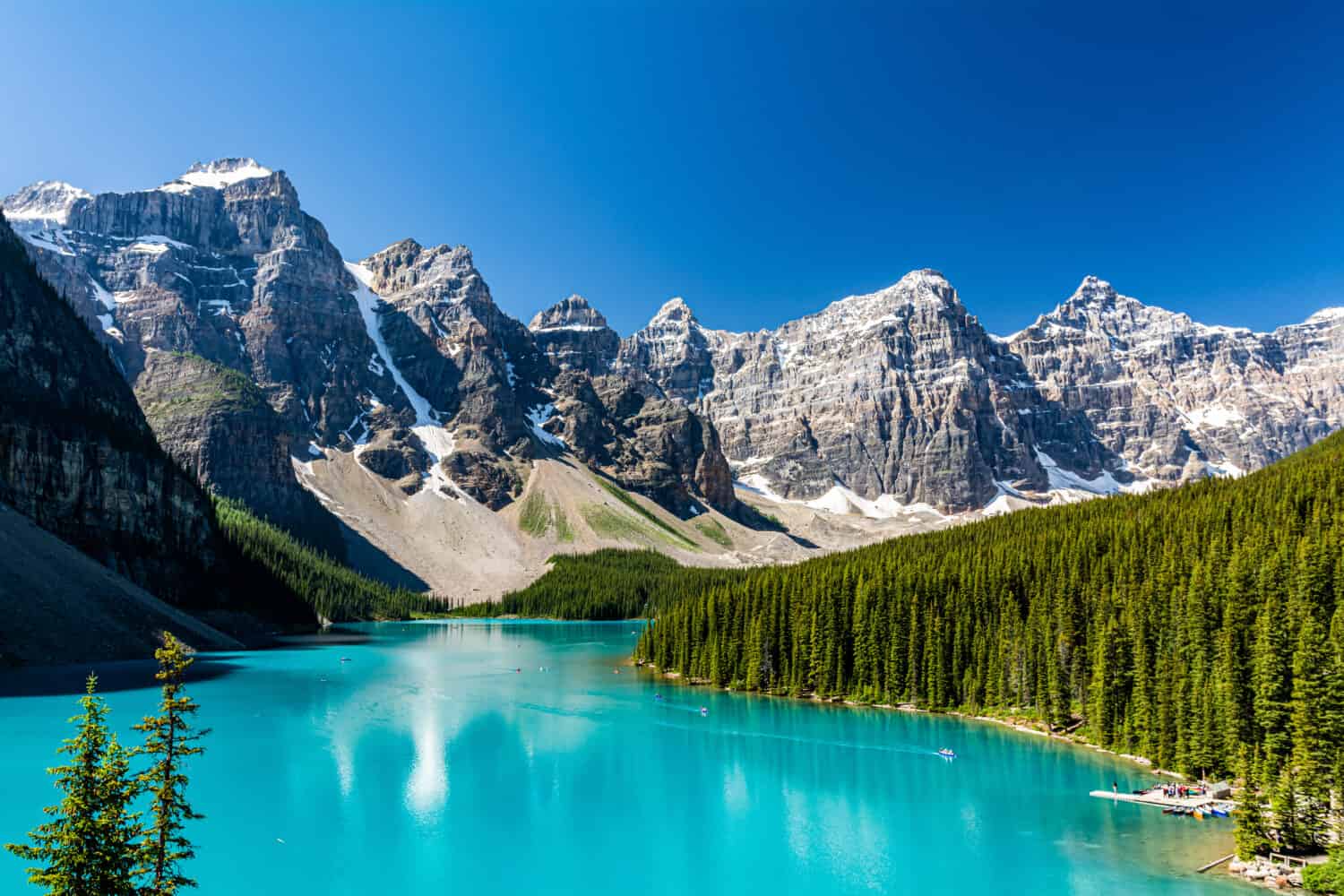
Moraine Lake was once on Canada’s twenty-dollar bill.
©Kabindra shrestha/Shutterstock.com
One of Canada’s most idyllic lakes is in the heart of the Valley of the Ten Peaks within Banff National Park. This stunning turquoise lake attracts millions of visitors each year. Situated at an elevation of 6,181 feet (1,884 meters), Moraine Lake is fed by glaciers. Its eye-catching turquoise color results from rock flour – fine particles of rock ground by glaciers – carried into the lake by meltwater. Additionally, ten magnificent peaks add to the incredible scenery.
The captivating beauty of the lake can sometimes lead to a false sense of security. The lake’s high altitude often results in unpredictable weather conditions with sudden storms and fog. And for those who want to get a cold plunge, be careful. The icy waters can cause hypothermia. And remember, Lake Moraine is surrounded by rough terrain, making emergency evacuation difficult.
11. Emerald Lake
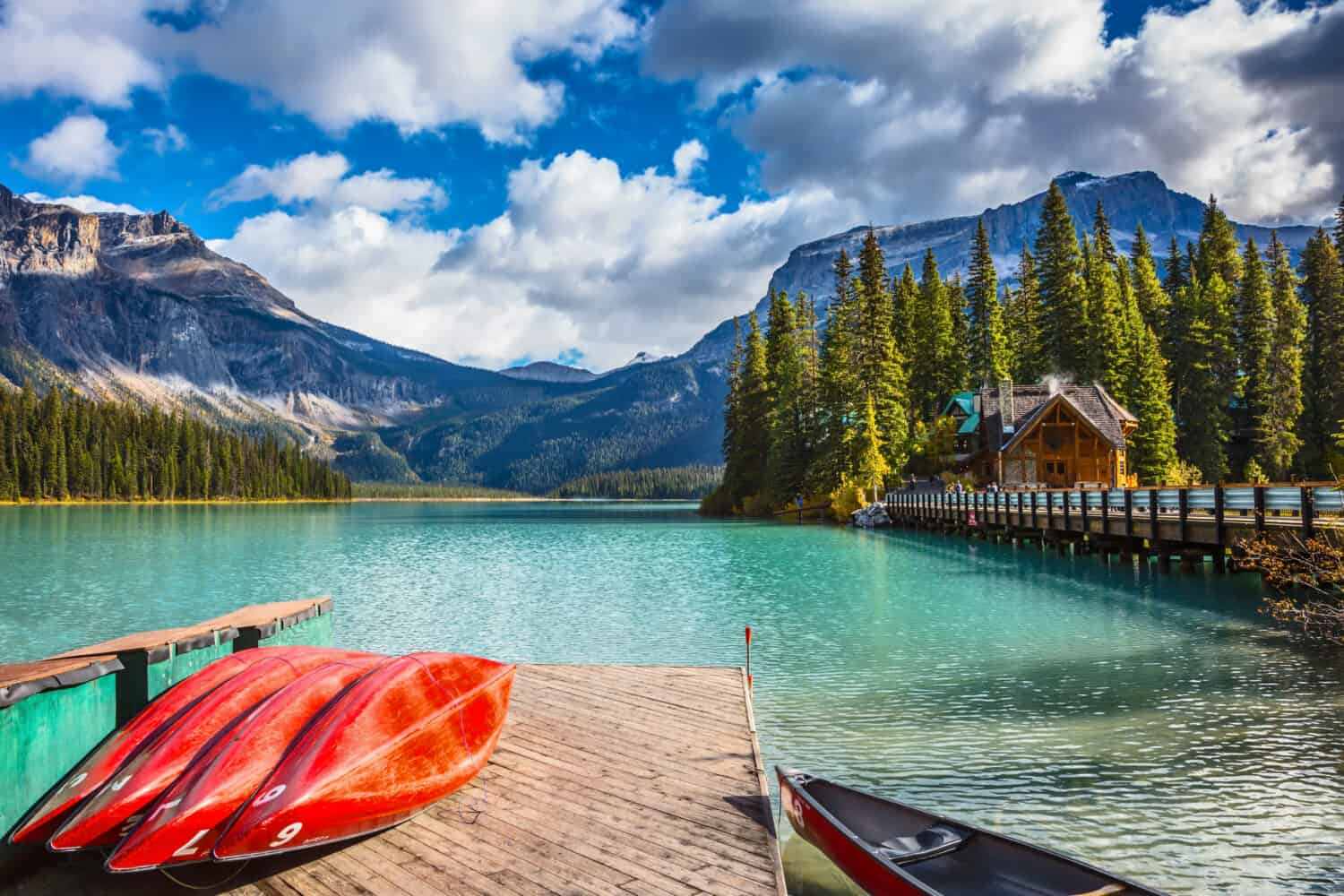
July to August are the best months to admire the lake’s emerald color.
©kavram/Shutterstock.com
Emerald Lake is picturesque, with turquoise waters, lush greenery, and towering mountains. Nestled in the heart of Yoho National Park, British Columbia, it is the largest of Yoho’s 61 lakes and ponds.
The Emerald Lake takes its name after the color of its waters, resulting from powdered limestone deposited from melting glaciers. The suspended limestone makes the water very cold, even during the summer. These cold waters are hazardous for anyone who might fall into the lake, with hypothermia risks.
12. Kluane Lake
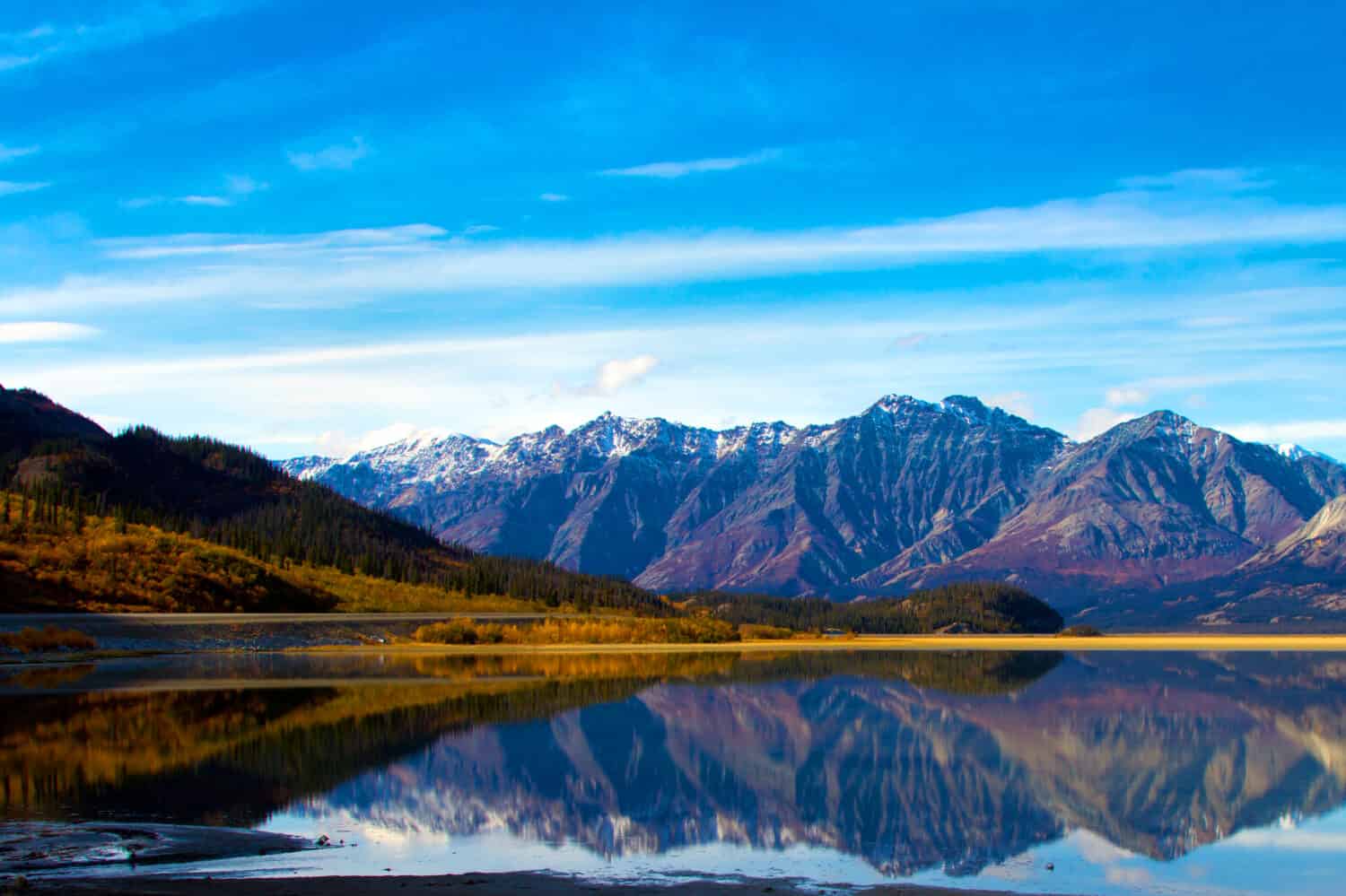
Kluane Lake is renowned for its fishing activities.
©A. Michael Brown/Shutterstock.com
In Canada’s Yukon Territory, Kluane Lake is the province’s largest lake. This picturesque lake displays stunning scenery, surrounded by snow-capped mountains.
The lake’s size and depths create a complex water flow and can unexpectedly pull swimmers under the water’s surface. Also, the lake is fringed by glaciers, making the water icy cold. But one of the biggest dangers is the lake’s isolation. In the case of an emergency, medical help can take time to arrive.
Accidents happen yearly, despite the very sparse population in the area.
The Danger of the Great Lakes
The Great Lakes are undeniably the most dangerous lakes in Canada. In the United States, Lake Michigan has more deaths than the other Great Lakes, with 51 deaths in 2022 and 20 in 2023.
In all the Great Lakes, 108 people drowned last year, and 50 died in 2023, according to the Great Lakes Surf Rescue Project.
How to Enjoy Canadian Lakes Safely

Boating is one of the residents’ and visitors’ favorite activities in the Canadian lakes.
©Gilberto Mesquita/Shutterstock.com
The beauty of Canada’s lakes is undeniable, yet their allure often masks their potential dangers. Safety must always come first when enjoying these majestic waters. Here are some essential safety tips to keep in mind.
Research the lake
Understanding the specific risks associated with each lake. From its depth and temperature to the presence of any local wildlife, prepare yourself with as much knowledge as possible before your visit.
Check the weather
Weather conditions can switch rapidly, especially in and around large bodies of water. Before your visit, check the weather forecast – and continue to do so regularly throughout your stay.
Swim safely
Always supervise children near water and ensure everyone knows how to swim. Stay within the shore, and avoid swimming in unknown waters. If possible, swim in areas surveilled by lifeguards.
Wear life jackets
Even if you’re a strong and experienced swimmer, life jackets are necessary when boating, kayaking, or paddle boarding. They can be the difference between life and death during dangerous conditions.
Respect local advisories
Pay attention to any signs posted near the lake – they contain important information about current conditions and potential dangers.
Always remember
The deeper the water, the stronger the currents and the colder the temperature. These factors can easily lead to fatigue, hypothermia, or even drowning.
So, whether you’re planning a fishing trip to the turbulent waters of Lake Winnipeg, a boat ride on the frigid Lake Superior, or a serene canoe trip on Lake Okanagan — remember to plan ahead. Don’t let the tranquility of these waters fool you; the dangers are often underwater.
But it is important to remember that millions visit Canada’s lakes each year without incident. Thus, residents and visitors can enjoy these stunning water bodies with adequate preparation.
Summary of the 12 Most Dangerous Lakes in Canada
| Rank | Lake | Province | Area (mi²) | Maximum depth (feet) | Dangers |
|---|---|---|---|---|---|
| 1 | Lake Erie | Ontario | 9,940 | 210 | Freezes easily, sudden storms during the November Gales. |
| 2 | Lake Superior | Ontario | 31,700 | 1,332 | Sudden temperature drops and rip currents. |
| 3 | Lake Huron | Ontario | 23,012 | 751 | Fast-changing weather, thick fog, and unpredictable currents. |
| 4 | Lake Ontario | Ontario | 7,320 | 802 | Underwater currents and sudden drop-offs. |
| 5 | Great Slave Lake | Northwest Territories | 10,502 | 2,014 | Extreme depth creates powerful undercurrents. Very remote and isolated. |
| 6 | Lake Okanagan | British Columbia | 136 | 761 | Violent storms and dangerous currents. |
| 7 | Lake Winnipeg | Manitoba | 9,465 | 118 | Waves up to six feet during storms. |
| 8 | Lake Louise | Alberta | 0.347 | 230 | Icy temperature, risks of hypothermia. |
| 9 | Maligne Lake | Alberta | 7.61 | 318 | Sudden downpours and fierce winds. |
| 10 | Moraine Lake | Alberta | 0.193 | 46 | Rough terrain and unpredictable weather conditions. |
| 11 | Emerald Lake | British Columbia | 0.351 | 230 | Icy cold waters, even in the summer, high risk of hypothermia. |
| 12 | Kluane Lake | Yukon | 158 | 299 | Icy water temperature with risks of hypothermia. Very remote and isolated. |
Thank you for reading! Have some feedback for us? Contact the AZ Animals editorial team.

